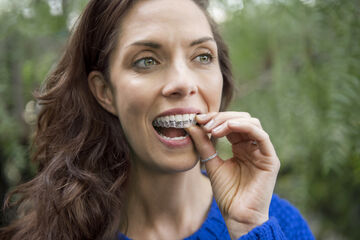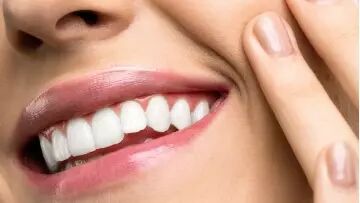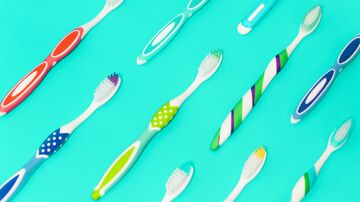
Have you ever noticed that some people have glowing white smiles and other people have yellow or grey discoloured smiles? The colour of your teeth is usually down to your genetics, but there are lifestyle factors that can influence the shade of your smile.
We think of teeth as being solid, but they are actually porous like a sponge. There are small holes or pores in the hard outer layer that allow particles to penetrate deep into the soft dental material below. This isn’t always problematic, but it can be if you consume a lot of food and drink that becomes trapped in the tooth.
What causes staining?
Dental staining can be caused by a wide range of factors, including:
Food
Drink
Medications
Medical conditions
Lifestyle choices
Poor dental hygiene
There are different types of staining and discolouration, and understanding which type you have will help to determine the best way to remove the stains and whiten your teeth.
Staining caused by food
Certain foods are more staining than others. Items like tomato sauces, curry with spices like turmeric and soy sauce will all cause deep-set stains to develop. These will only get worse over the years without intervention.
This type of staining cannot be removed with brushing alone. You will need professional teeth whitening from your dentist to remove these types of stains.

Staining caused by drinks
People often assume coffee is the worst culprit for dental staining, but tea is actually worse due to its tannin content. Other staining drinks include red wine and dark fizzy drinks like cola.These stains are deep within the tooth and can only be lifted and removed by professional teeth whitening. After you have had a whitening treatment, you should try to avoid these drinks or use a straw to prevent the stains from returning.
Discolouration caused by medication
Certain antibiotics are known to cause dental discolouration in children. These include tetracycline, ciprofloxacin, and doxycycline. If you had these as a child, there is a chance your teeth will have bands of discolouration on your teeth.
Dental veneers and composite bonding will offer the best route to addressing this type of discolouration.
Discolouration caused by medical conditions
Certain conditions can cause discolouration. This includes liver disease, celiac disease, calcium deficiency, eating disorders and metabolic diseases. These diseases often impact the white-coloured enamel that surrounds the tooth and leaves the yellow-coloured dentin below exposed.
Teeth whitening may be effective for these conditions, but composite bonding and veneers might be more effective and will also help to protect the exposed dentin.

Discolouration caused by lifestyle choices
Smoking and vaping can lead to discolouration of the teeth and a wide range of oral health conditions. Smoking can lead to a build-up of nicotine on the teeth, which leaves them looking dull and either yellow or brown.
This is a surface stain, which means you can often address this with a trip to the dental hygienist. Good oral health habits at home will also help to reduce staining and discolouration.
Discolouration caused by poor oral hygiene
Everyone needs to brush and floss twice a day to keep their teeth clean. Failure to do this can lead to a build-up of sticky plaque on the surface of the teeth. Plaque is clear, but as it is sticky, it can attract staining particles which make it more visible. If left untreated, plaque will harden into tartar, which is usually brown or yellow.
Since these are both surface stains, they can often be removed by a trip to the dental hygienist. This will also help to get your oral health back on track and protect you from gum disease.
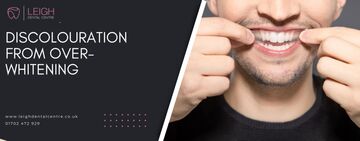
Discolouration from over-whitening
While teeth whitening can be highly effective for removing deep-set stains from the teeth, there is also the risk it can be overused. Overuse will result in white patches on the teeth or a ceramic appearance where the teeth look almost transparent. This is the result of irreversible damage to the dental enamel. If this happens, you need to stop using teeth whitening products.
What can be done for stains and discolouration?
Good oral hygiene and good habits are two of the best ways to prevent discolouration. You can also use professional teeth whitening to flush out deep-set staining. For those stains that won’t respond to teeth-whitening products, we recommend using veneers, crowns or composite bonding to conceal the discolouration. If you’re curious about your teeth whitening options, get in touch to arrange a consultation today.
Contact us to make an appointment
Exclusive Offer
Airflow stain removal from our hygienist

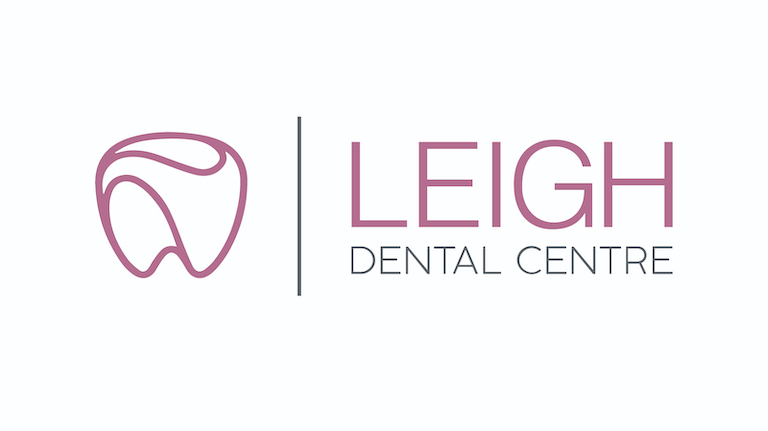
5 Benefits of Invisalign
11.09.2017
Time for you perfect smile?
Book your consultation today
When visiting our practice you know you are visiting the dental professionals trained to the highest standards. You are greeted by our welcoming staff, who share the same aim, to make your visit with us as comfortable and stress free as possible.
